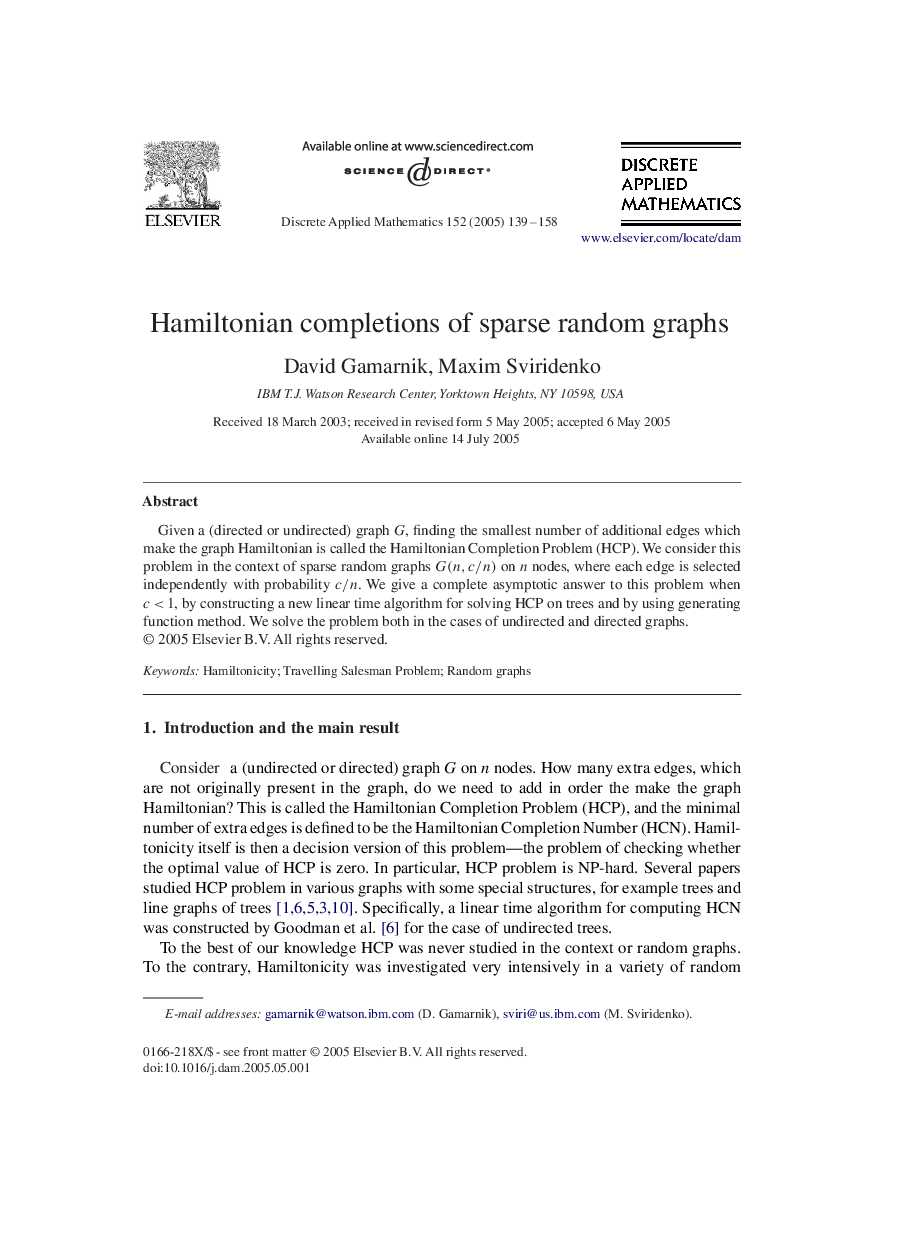| Article ID | Journal | Published Year | Pages | File Type |
|---|---|---|---|---|
| 9655118 | Discrete Applied Mathematics | 2005 | 20 Pages |
Abstract
Given a (directed or undirected) graph G, finding the smallest number of additional edges which make the graph Hamiltonian is called the Hamiltonian Completion Problem (HCP). We consider this problem in the context of sparse random graphs G(n,c/n) on n nodes, where each edge is selected independently with probability c/n. We give a complete asymptotic answer to this problem when c<1, by constructing a new linear time algorithm for solving HCP on trees and by using generating function method. We solve the problem both in the cases of undirected and directed graphs.
Related Topics
Physical Sciences and Engineering
Computer Science
Computational Theory and Mathematics
Authors
David Gamarnik, Maxim Sviridenko,
